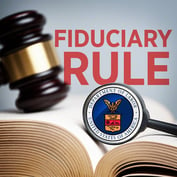The word “solo” in “solo 401(k)” might lead one to think there’s little opportunity for helping a large number of clients. But with the entrepreneurial spirit still alive and kicking in the U.S., despite the pandemic’s blows to small businesses, it might be time to reconsider. For some perspective on the subject, we approached Tom Granger, Second Vice President, Qualified Plans, for Security Benefit, to get his views.
BENEFITSPRO: What is the opportunity for advisors with small businesses and solo enterprises, and their retirement savings plans?
TOM GRANGER: We are seeing the gig-economy on the rise, particularly since the start of the COVID-19 pandemic. For these workers, solo 401(k) plans are the ideal solution because they allow considerable contribution flexibility and plan design. Financial advisors have an opportunity to address this shift with their clients and offer unique solutions that may allow for optimal growth of retirement savings amid the continued impact of the COVID-19 pandemic and beyond.
Are there comparable 401(k) alternatives that participants in select earning brackets should consider?
There are some powerful and agile solutions available that can provide freelancers and gig workers with added flexibility. One particular solution for these one-person businesses, and freelancers looking to save, is a solo 401 (k) plan which is designed for businesses without employees.
Business owners can choose a traditional pre-tax 401(k) in which ‘salary deferral’ contributions reduce their income in the year they are made. Alternatively, individuals can choose a Roth after-tax Solo 401(k) in which contributions are not made on a pre-tax basis, however distributions can be taken tax-free if certain requirements are met.
How do these non-traditional defined contribution plans work for small businesses and the gig economy—what segments are impacted?
Small business owners and freelancers who choose to invest in a Solo 401(k) also may have the opportunity to borrow from themselves via a participant loan from the Plan, which may allow individuals seeking quick capital to become their own investor.
How do these non-traditional defined contribution plans work for small businesses and the gig economy—what segments are impacted?
Solo 401(k)s offer higher contribution limits, up to $64,500 per year for those age 50 or older, allowing additional flexibility for small business owners. These plans also allow individuals to choose their preferred tax advantage, pre-tax salary deferrals or after-tax Roth contributions up to $19,500 or $26,000 if age 50 or older.









 April 12, 2021 at 10:37 AM
April 12, 2021 at 10:37 AM











